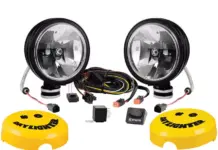Following on from Disney’s haptic VR jacket, that let’s you “feel the force,” and the release of Plexus’ haptic gloves that let you touch virtual objects, one of the innovative future technologies that was on display at this year’s Consumer Electronics Show, CES 2019, in Las Vegas was the Teslasuit, a full body Virtual Reality (VR) haptic suit that lets them feel everything that goes on in the game or virtual world they’re in, so in other words, if they’re hit by a sniper in a game, kicked, punched, or even perhaps hugged, then they feel it. Similarly though, and adding a twist here, this same type of technology could also be combined with neurostimulation training to help hone an athlete’s technique or, when combined with AI even be used to train world class musicians. Think combinations young futurist, not just tech…
In a haptic feedback system users are subjected to stimuli that mimic real world sensations that involve touch, such as shocks, punches, pushes, bumps, and so on. Teslasuit then combines these with other environmental feedback, including climate control, motion capture, and biometric systems “to give a fully responsive, immersive experience to the user.” And when it’s combined with true-to-life VR graphics, like the ones promised by new metalense technology, the suit could finally give gamers the immersive VR experience they’ve long craved.
The full body sensations of the Teslasuit seem to indicate a new level of experience for virtual reality users, but the haptic capabilities aren’t the only things making it stand out. The suit’s biometric system is designed to use machine learning to analyze heart rate, stress levels, and overall mental and emotional states to create experiences catered to the user. But how this capability is going to be used is up to the games developers., and as data is gathered from biometrics, capabilities will follow.
Teslasuit uses 68 electrical channels embedded throughout the suit’s fabric to deliver electrical stimulations, and since its debut the company’s now working to expand on that number. Also included in the suit’s software is a haptic library, enabling game developers to create their own effects to correspond with their virtual worlds. The climate control system adjusts the temperature of the suit, heating and cooling in accordance with the virtual environment, and finally its motion capture and avatar tracking system makes sure the user is interacting with their environment in real time and in the right way.
Analysis:
The emerging technological advance in the realm of haptic suit has given gaming industry a new path too look forward with regard to gaming experience, it also provides insights for movie theaters’ adaptation for the future trend. Additionally, haptic suit can be easily applied to home usage, offering customers a whole new option for experiencing theatrical effects, even four-dimensional experience, without actually going outside.




